I'm making jpeg encoder in C++. I successfully create Huffman tree, but how do I generate huffman codes from tree? One way I tried was to assign 0 to left branch and 1 to right branch, just like in the picture, but there is a problem in this approach, because one element will be coded with all ones (like sibol E in picture bellow which is coded with 11), but jpeg standard doesn't allow huffman codes with all ones.
